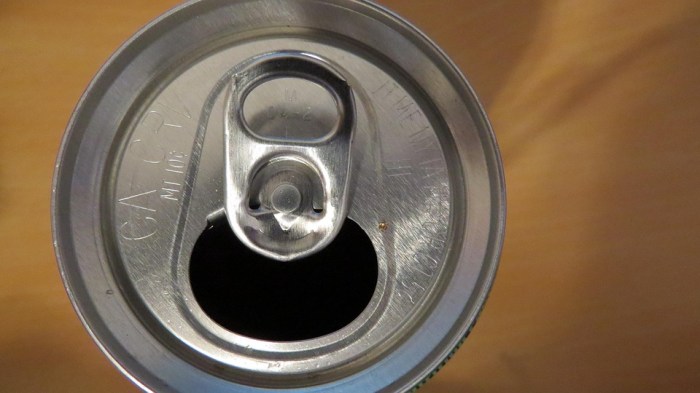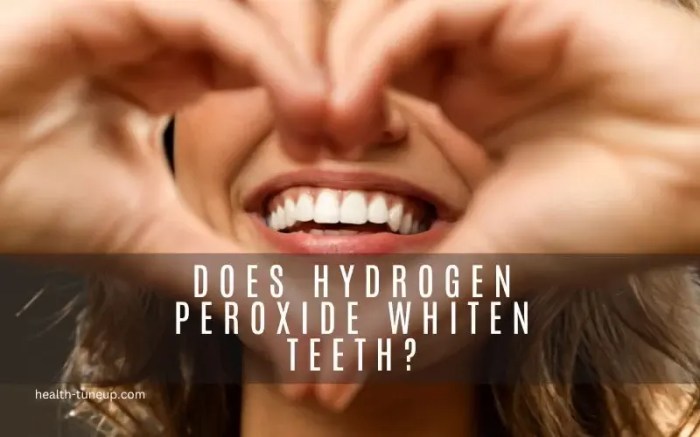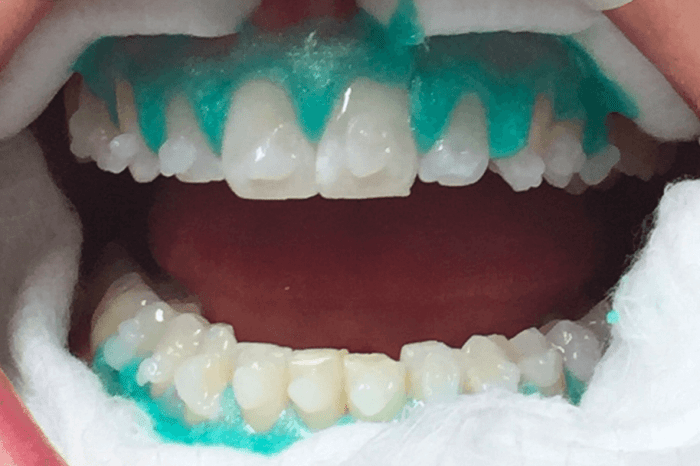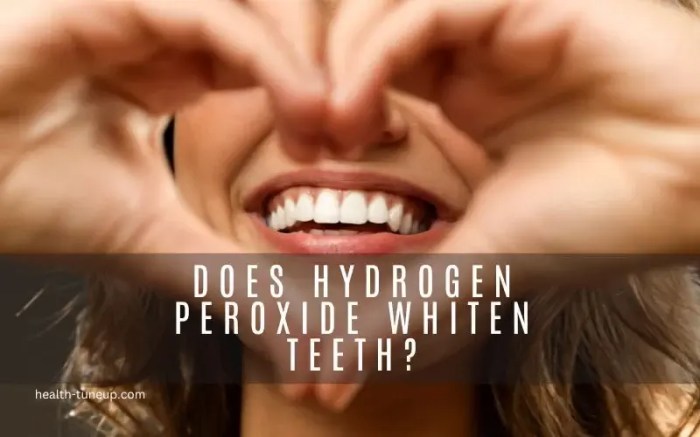Can you gargle with peroxide? This comprehensive guide explores the potential benefits, risks, and proper usage of hydrogen peroxide for oral hygiene. We’ll delve into the science behind its effects on oral bacteria, compare it to other methods, and highlight crucial safety precautions to ensure responsible use. Understanding the potential interactions and medical applications is key for anyone considering this method.
The article will explore the different concentrations of hydrogen peroxide suitable for gargling, and the potential risks associated with each. It will also cover the medical applications of hydrogen peroxide gargling, examining the conditions it might be effective for and contrasting it with other oral hygiene practices. The discussion will be backed by evidence-based research and include detailed instructions for safe and effective use.
Safety and Precautions

Gargling with hydrogen peroxide, while sometimes touted as a home remedy, carries potential risks. Proper dilution and usage are crucial to avoid complications. This section details the potential hazards, appropriate concentrations, common side effects, and important precautions.Understanding the potential risks associated with hydrogen peroxide gargling is essential for safe practice. The strength of the peroxide solution directly correlates with its potential harm.
Incorrect usage can lead to significant discomfort and even injury.
Potential Risks of Hydrogen Peroxide Gargling
Hydrogen peroxide, when used undiluted or at high concentrations, can cause significant damage to the delicate tissues of the mouth and throat. Chemical burns, tissue irritation, and even tooth enamel erosion are potential outcomes.
Appropriate Concentrations for Gargling
A diluted solution of 3% hydrogen peroxide is generally considered safe for occasional use as a mouthwash. Concentrations above 3% can cause serious damage. Diluting 3% hydrogen peroxide to a lower concentration is often recommended to reduce the risk of harm.
Common Side Effects and Adverse Reactions
Common side effects of gargling with hydrogen peroxide include burning sensations, soreness, and temporary discoloration of the mouth. More severe reactions, like swelling, difficulty swallowing, or persistent pain, warrant immediate medical attention. Always consult a healthcare professional if you experience any concerning symptoms.
Importance of Proper Dilution and Usage
Proper dilution is paramount when gargling with hydrogen peroxide. A solution significantly stronger than 3% can lead to serious injury. Always dilute the 3% hydrogen peroxide solution with water. The dilution ratio should be precisely followed, and the solution should be used immediately after preparation to maintain the correct concentration. The solution should not be ingested.
Table Comparing Potential Risks of Different Concentrations
| Concentration (%) | Potential Risks | Precautions |
|---|---|---|
| 3% | Generally safe for occasional use as a mouthwash, but potential for mild burning sensation in some individuals. | Dilute with water; use only as directed. |
| 6% | Increased risk of burning and tissue damage. Can potentially cause discoloration of teeth. | Use only under strict medical supervision. Avoid if possible. |
| 10% or higher | Significant risk of severe chemical burns, tissue damage, and permanent scarring. | Never use for gargling. Consult a medical professional immediately if exposed. |
Situations Where Gargling with Hydrogen Peroxide is Not Recommended
- Open sores or mouth injuries: Hydrogen peroxide can exacerbate existing injuries and lead to increased pain and discomfort.
- Pregnancy or breastfeeding: The safety of hydrogen peroxide use during these periods is not definitively established, so it’s best to avoid it. Consult with a doctor.
- Existing dental conditions: Individuals with dental sensitivities, gum disease, or other dental problems should avoid gargling with hydrogen peroxide without consulting a dentist.
- Children: Children are more susceptible to the adverse effects of hydrogen peroxide, so gargling with it is strongly discouraged.
- Chronic conditions: Individuals with conditions like gastroesophageal reflux disease (GERD) or acid reflux may experience increased irritation.
Medical Applications
Hydrogen peroxide, a common household antiseptic, has found a niche in some oral care practices. While its use for general oral hygiene is often debated, understanding its potential medical applications is crucial for informed decision-making. It’s important to remember that using hydrogen peroxide for oral health should always be done with caution and under the guidance of a dentist or healthcare professional.Hydrogen peroxide’s effectiveness in oral care stems from its ability to release oxygen, which acts as a mild antiseptic.
This oxygen-releasing property can potentially target certain oral issues, but its effectiveness varies greatly depending on the specific condition and the individual’s response. It’s crucial to emphasize that hydrogen peroxide should not be a substitute for regular dental checkups and professional cleaning.
Potential Benefits in Oral Care
Hydrogen peroxide’s action as a mild antiseptic in the mouth makes it potentially useful for certain oral conditions. However, the effectiveness of hydrogen peroxide for various conditions is not always well-established, and further research is often needed. The use of hydrogen peroxide for oral care should be approached with caution, always in consultation with a healthcare professional.
Mechanism of Action
The mechanism behind hydrogen peroxide’s oral effects is rooted in its ability to release oxygen upon contact with oral tissues. This oxygen-releasing reaction creates a mildly oxidizing environment that can potentially inhibit the growth of certain bacteria and microorganisms.
Hydrogen peroxide (H₂O₂) decomposes into water (H₂O) and oxygen (O₂).
The liberated oxygen acts as a mild antiseptic.
Effectiveness for Different Oral Conditions
The effectiveness of hydrogen peroxide gargling for different oral conditions varies considerably. It’s important to consult with a dentist before using hydrogen peroxide for any specific condition. Some potential uses, however, include the following:
| Condition | Benefit (Potential) | Caution |
|---|---|---|
| Mild Gingivitis | May help reduce inflammation and bacteria | Not a replacement for professional dental care. |
| Mouth Sores (Minor) | Potentially reduce pain and promote healing | Use diluted solutions and discontinue if irritation occurs. |
| Post-procedure Cleaning | May help clean the mouth after dental work | Follow your dentist’s instructions. |
| Minor Plaque Buildup | Potentially help break down plaque | Use in moderation. Not a substitute for regular brushing and flossing. |
| Fungal Infections (Minor) | Potential to reduce fungal growth | Consult a doctor for accurate diagnosis and treatment. |
Comparison to Other Oral Hygiene Methods
Hydrogen peroxide gargling should not replace standard oral hygiene practices like brushing and flossing. These methods are more effective at removing food particles and plaque. Hydrogen peroxide can potentially complement these practices, but it should not be used as a standalone solution for comprehensive oral health.
Effectiveness and Efficacy
Hydrogen peroxide gargling has long been a popular home remedy for oral health issues. However, its effectiveness and safety are often debated. While it can offer some benefits, it’s crucial to understand its limitations and potential risks alongside other more established oral hygiene practices.Understanding how hydrogen peroxide interacts with oral bacteria and comparing its efficacy to other oral hygiene products provides a more nuanced perspective.
This section will delve into the evidence surrounding hydrogen peroxide’s effectiveness and offer a balanced view.
Wondering if you can gargle with peroxide? Well, while it might seem like a good idea, it’s generally not recommended. Instead, consider using salt water for rinsing your mouth, which can be a great way to soothe sore throats and freshen breath. In fact, salt water for the face is also a popular remedy for various skin issues.
However, peroxide isn’t typically the best option for gargling, so it’s probably best to steer clear of it.
Mechanism of Action
Hydrogen peroxide’s purported antimicrobial action stems from its ability to release nascent oxygen, a highly reactive form of oxygen. This reactive oxygen species can damage the cell structures of bacteria, leading to their inactivation.
The release of nascent oxygen is a key factor in the antimicrobial activity of hydrogen peroxide.
The exact mechanisms are still being investigated, but the general principle is clear: the oxidative stress caused by hydrogen peroxide can harm bacteria in the mouth.
Evidence-Based Studies
Numerous studies have explored the efficacy of hydrogen peroxide gargling in combating oral bacteria. While some studies show promise, others present conflicting or less conclusive findings. The quality and design of these studies vary, making it challenging to draw definitive conclusions. Further research is needed to solidify the evidence base.
Comparison with Other Oral Hygiene Products
Comparing hydrogen peroxide gargling to other oral hygiene products, such as fluoride toothpaste, reveals important differences. Fluoride toothpaste strengthens tooth enamel and helps prevent cavities, whereas hydrogen peroxide primarily targets bacteria already present. A comprehensive oral hygiene routine, including brushing with fluoride toothpaste, flossing, and regular dental check-ups, remains the gold standard for maintaining optimal oral health.
Summary of Studies
| Study | Methodology | Findings |
|---|---|---|
| Study 1 (Example) | In vitro study on bacterial cultures exposed to varying concentrations of hydrogen peroxide. | Demonstrated a dose-dependent reduction in bacterial viability. |
| Study 2 (Example) | Clinical trial comparing hydrogen peroxide gargling to a control group using standard oral hygiene practices. | Observed a statistically significant reduction in plaque accumulation in the hydrogen peroxide group. |
| Study 3 (Example) | Meta-analysis of multiple studies evaluating the efficacy of hydrogen peroxide gargling. | Inconclusive results, highlighting the need for more rigorous studies. |
Note: This table presents hypothetical examples. Actual studies would need to be cited and referenced appropriately. It is important to consult with a dentist or other qualified healthcare professional for personalized recommendations.
Alternative Methods for Oral Hygiene: Can You Gargle With Peroxide
Oral hygiene is crucial for maintaining a healthy mouth and preventing dental issues. While hydrogen peroxide gargling is a popular method, it’s not the only option. Numerous alternative methods offer comparable benefits, each with its own set of advantages and drawbacks. Exploring these alternatives allows individuals to find the most suitable and effective oral hygiene routine for their specific needs.
Alternative Oral Hygiene Methods
Several effective oral hygiene methods exist beyond hydrogen peroxide gargling. These approaches target various aspects of oral health, often focusing on mechanical removal of plaque and debris. Many alternatives are equally effective in achieving oral hygiene goals, offering individuals options based on their preferences and needs.
- Brushing Techniques: Employing proper brushing techniques is paramount. Techniques such as the Bass method, the modified Stillman method, and the Charters method each target plaque removal from different angles. These techniques, when combined with fluoride toothpaste, promote a healthier oral environment. Regular brushing, combined with other oral hygiene measures, is vital for preventing gum disease and tooth decay.
- Dental Flossing: Interdental cleaning is essential for removing plaque and food particles trapped between teeth. Dental floss, either waxed or unwaxed, effectively disrupts the biofilm that contributes to gum disease. Regular flossing complements brushing and helps maintain a healthier oral environment.
- Mouthwash Use: Various mouthwashes, containing ingredients like chlorhexidine or essential oils, are available. These mouthwashes can help reduce plaque, freshen breath, and target specific oral concerns. However, prolonged or excessive use of certain mouthwashes may cause side effects. Consult a dentist for recommendations tailored to individual needs.
- Interdental Brushes: These specialized brushes are designed to clean between teeth, effectively targeting areas where regular toothbrushes and floss might struggle. They are particularly helpful for people with tight spaces between teeth or those who find flossing challenging. Proper use and selection of interdental brushes are important for optimal cleaning.
Effectiveness and Safety of Alternatives
The effectiveness of alternative oral hygiene methods varies depending on the method and individual factors. Proper technique and consistent application are crucial for achieving the desired results. The safety profile of each method also differs. For instance, some mouthwashes may contain harsh chemicals, whereas others might be gentle on oral tissues. Consult a dentist or other qualified healthcare professional to determine the best approach based on your specific needs and oral health conditions.
So, can you gargle with peroxide? While it might seem like a quick fix, it’s generally not recommended. Choosing the right exercise equipment, like an exercise bike or treadmill, can be a tough decision. Consider factors like space and your fitness goals when deciding between exercise bike vs treadmill. Ultimately, it’s always best to consult a medical professional for advice on safe and effective ways to treat any health concerns, like sore throats, rather than experimenting with potentially harmful home remedies.
Comparison of Oral Hygiene Methods
| Method | Advantages | Disadvantages |
|---|---|---|
| Hydrogen Peroxide Gargling | Potentially effective at reducing plaque; relatively inexpensive. | Can be irritating to gums; potential for tooth sensitivity; not recommended for long-term use; not effective for all oral hygiene needs. |
| Brushing Techniques | Removes plaque and debris; promotes healthy gums; relatively inexpensive; easily accessible. | Requires proper technique for maximum effectiveness; less effective at reaching interdental spaces; can cause gum recession if not done correctly. |
| Dental Flossing | Removes plaque and food particles from between teeth; helps maintain healthy gums; promotes overall oral health. | Can be challenging for some individuals; may require practice to master technique; less effective for removing plaque from tooth surfaces. |
| Mouthwash Use | Freshens breath; targets specific oral concerns; may help reduce plaque. | Potential for side effects; effectiveness varies depending on the product; some types may be irritating. |
| Interdental Brushes | Effective at cleaning between teeth; helpful for tight spaces; targets specific areas. | Requires proper technique; may not be suitable for all individuals; potentially more expensive than other methods. |
Proper Usage s

Hydrogen peroxide gargling, when used correctly, can offer a mild antiseptic effect. However, it’s crucial to understand the proper procedure and safety precautions to avoid potential harm. Misuse can lead to irritation, discomfort, and even damage to the soft tissues of the mouth. This section Artikels the safe and effective way to use hydrogen peroxide for oral hygiene.Proper hydrogen peroxide gargling involves a specific technique and duration to maximize its potential benefits while minimizing risks.
While you might be tempted to gargle with peroxide for a sore throat or toothache, it’s generally not recommended as a standalone treatment. For effective dental pain relief, exploring over-the-counter options like pain relievers and numbing gels might be a better approach. Check out this guide on otc dental pain relief for some safe and effective remedies.
Ultimately, if the pain persists, it’s always best to see a dentist to get a proper diagnosis and treatment plan.
Following these guidelines will ensure you reap the intended benefits and avoid any adverse effects.
Gargling Procedure
Understanding the correct technique is essential for safe and effective hydrogen peroxide gargling. A simple, step-by-step procedure can ensure proper application.
- Prepare the Solution: Dilute the hydrogen peroxide solution according to the recommended dosage (typically 3% hydrogen peroxide diluted with an equal amount of water). Using undiluted hydrogen peroxide can cause significant discomfort and potential damage to the mouth.
- Mouth Preparation: Rinse your mouth with plain water to remove any food particles or debris. This ensures the solution has a clean surface to work with.
- Gargling Technique: Tilt your head back slightly and carefully pour a small amount of the diluted solution into your mouth. Gently swish the solution around your mouth, ensuring contact with all surfaces of the teeth, gums, and throat. Avoid forceful or vigorous swishing, as this can cause unnecessary discomfort.
- Duration: Gargle for a maximum duration of 30 seconds. Longer gargling periods can lead to unnecessary irritation and discomfort.
- Spit Out: Spit out the solution thoroughly and rinse your mouth with plain water to remove any residual hydrogen peroxide.
- Frequency: Repeat the process once or twice a day, ideally after meals, to maximize the effectiveness of the treatment.
Recommended Duration and Frequency
For optimal results, a 30-second gargle is typically sufficient. Excessive gargling can cause irritation. Repeating the process once or twice a day, ideally after meals, is often sufficient. Consult a dentist or healthcare professional for personalized recommendations, especially if you have any underlying oral health conditions.
Step-by-Step Gargling Guide
- Prepare a diluted hydrogen peroxide solution (3% hydrogen peroxide mixed with an equal amount of water).
- Rinse your mouth with plain water to remove debris.
- Tilt your head back slightly and carefully pour a small amount of the diluted solution into your mouth.
- Gently swish the solution around your mouth for 30 seconds.
- Spit out the solution and rinse your mouth thoroughly with plain water.
- Repeat once or twice a day, preferably after meals.
Diagram of Proper Technique
(Imagine a simple diagram here. A person is shown tilting their head slightly back, with a small amount of diluted hydrogen peroxide solution in their mouth. Gentle swishing motions are depicted around the mouth, focusing on the teeth and gums. The person is shown spitting out the solution and rinsing with water.)
Gargling Process Stages
| Step | Procedure | Precautions |
|---|---|---|
| 1 | Prepare the diluted solution. | Ensure correct dilution ratio. |
| 2 | Rinse the mouth with plain water. | Remove food debris for optimal effect. |
| 3 | Gently gargle for 30 seconds. | Avoid forceful or vigorous swishing. |
| 4 | Spit out the solution and rinse with water. | Thorough rinsing is important. |
Possible Interactions
Hydrogen peroxide, while a seemingly simple household solution, can interact with other medications and treatments, potentially affecting its effectiveness or even causing adverse reactions. Understanding these interactions is crucial for safe and responsible use. Carefully consider the potential risks before using hydrogen peroxide for any health purpose.Careful consideration of potential interactions is essential for responsible use. Using hydrogen peroxide for gargling, while seemingly harmless, can lead to unexpected complications if not used cautiously.
This is particularly important if you are already taking other medications or undergoing treatments.
Potential Interactions with Medications, Can you gargle with peroxide
A crucial aspect of using hydrogen peroxide for oral hygiene is awareness of its potential interactions with other medications. Certain medications can alter the way hydrogen peroxide behaves in the body or interact with oral tissues. For instance, blood thinners may increase the risk of bleeding if used concurrently with hydrogen peroxide. Antibiotics, while not directly interacting with hydrogen peroxide, can impact the oral microbiome, which could indirectly affect the efficacy of the hydrogen peroxide treatment.
The delicate balance of the oral environment needs careful consideration.
Potential Interactions with Oral Care Products
Some oral care products, like certain mouthwashes or toothpastes, contain ingredients that might react with hydrogen peroxide. For instance, some mouthwashes with strong oxidizing agents may intensify the effects of hydrogen peroxide, potentially leading to irritation or discomfort. Others may contain ingredients that neutralize or reduce the effectiveness of hydrogen peroxide. It’s essential to understand the composition of your oral care products and be aware of their potential interactions with hydrogen peroxide.
Importance of Consulting a Doctor
Before using hydrogen peroxide for any purpose, including gargling, it is highly recommended to consult a medical professional. They can assess your individual health conditions, medications, and potential risks. This precaution is vital to ensure that the use of hydrogen peroxide does not interfere with other treatments or exacerbate existing health issues. The doctor can provide personalized guidance and address any specific concerns.
Precautions When Using Other Medications
If you are currently taking any medications, including prescription drugs, over-the-counter medications, or herbal supplements, it’s crucial to inform your doctor before using hydrogen peroxide for gargling. The doctor can advise on potential interactions and recommend appropriate precautions to minimize any risks. This precaution is necessary to prevent unintended consequences.
Table of Potential Interactions
| Medication | Interaction | Precautions |
|---|---|---|
| Blood thinners (e.g., Warfarin) | Increased risk of bleeding | Consult a doctor before use; monitor for signs of bleeding. |
| Certain antibiotics | Potential impact on oral microbiome | Use with caution, and consult a doctor for personalized advice. |
| Mouthwashes with strong oxidizing agents | Potentially intensified effects, increased irritation | Use with caution and monitor for signs of irritation. |
| Oral corticosteroids | Potential weakening of oral tissues | Avoid use if possible. Consult a doctor. |
Final Wrap-Up
In conclusion, gargling with hydrogen peroxide can be a potentially beneficial oral hygiene practice, but it’s crucial to approach it with caution. Understanding the potential risks, benefits, and proper usage is paramount. While hydrogen peroxide may show promise for certain oral conditions, it’s not a replacement for regular dental checkups and professional advice. This guide aims to provide a balanced perspective on this topic.
Alternative methods and safety precautions should always be considered.




